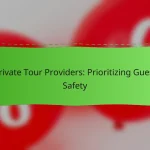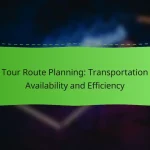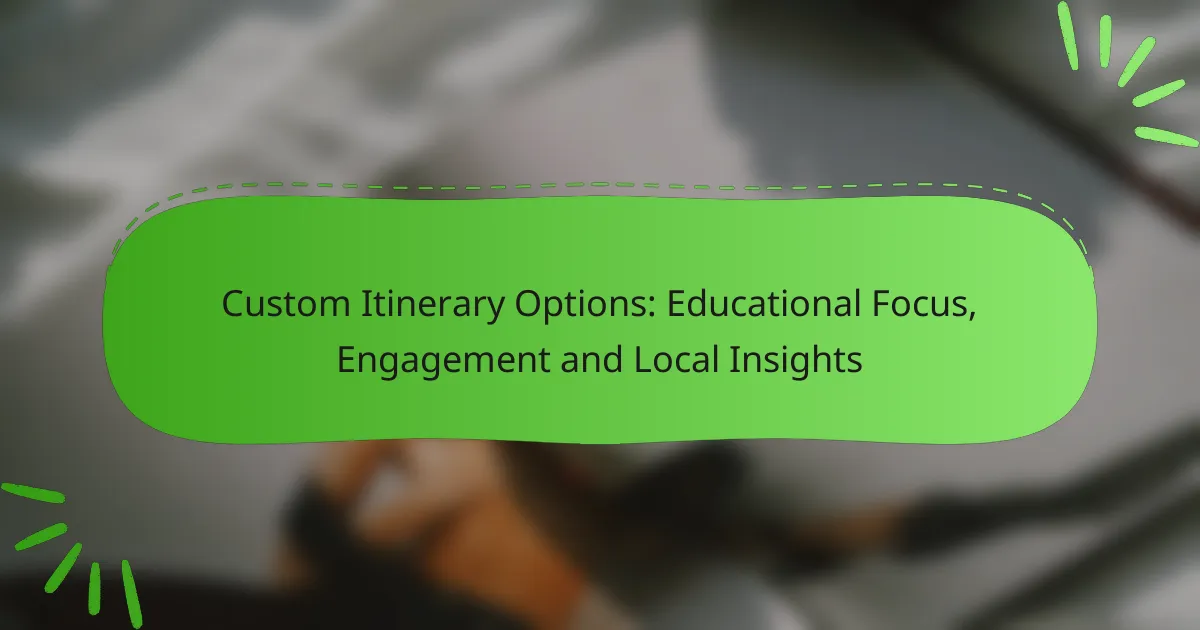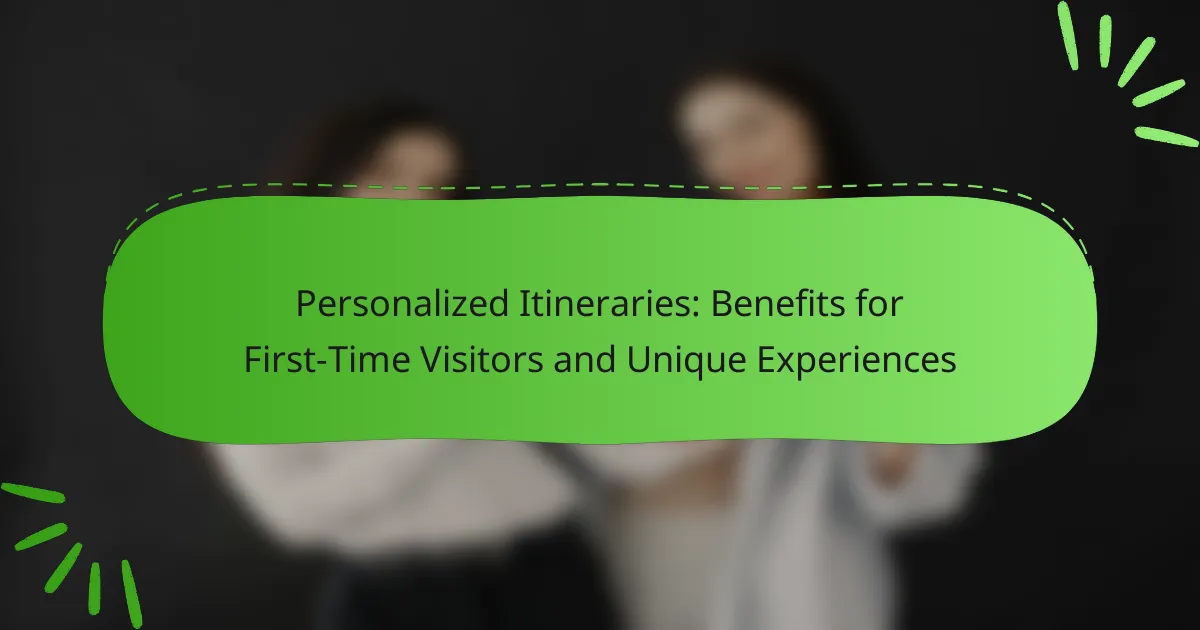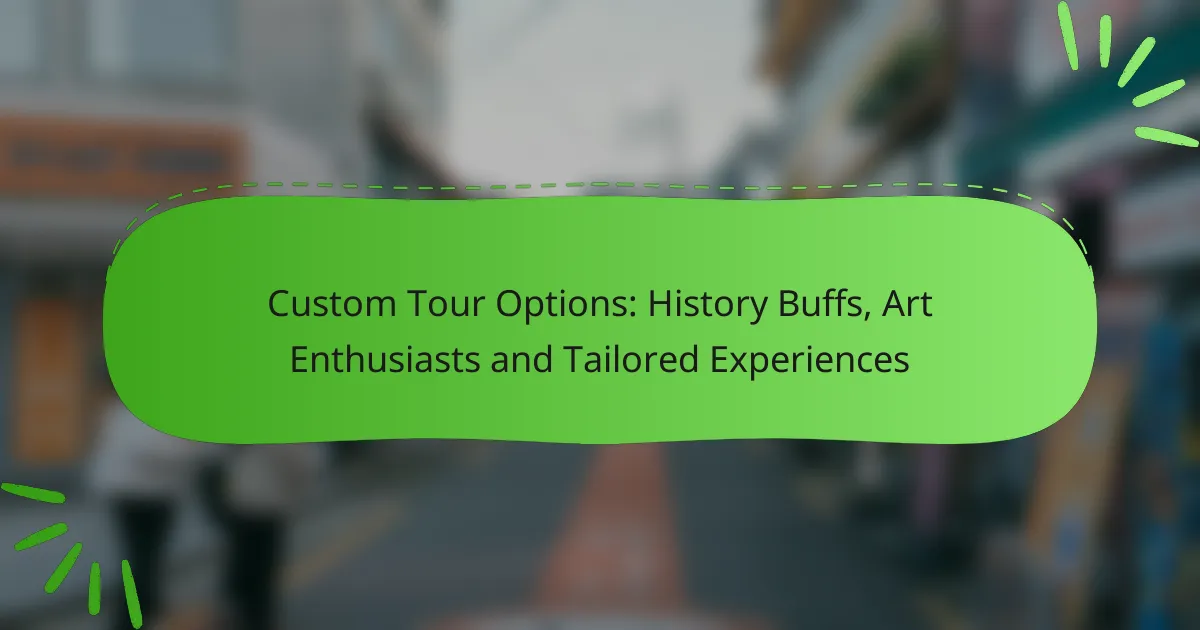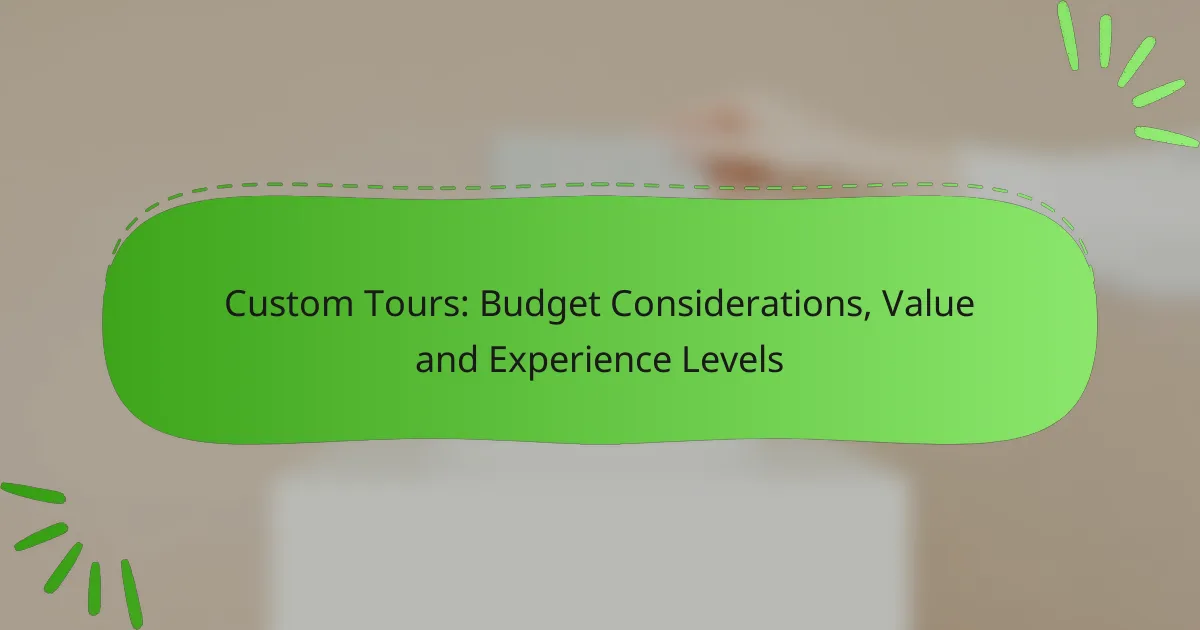Custom itinerary options for educational travel in the USA offer a unique blend of hands-on workshops, guided tours, and cultural immersion experiences that cater to diverse learning interests. By integrating local insights and interactive elements, these itineraries not only enhance student engagement but also foster a deeper understanding of the communities and subjects explored. Tailoring these experiences to educational goals ensures a dynamic and impactful learning journey.
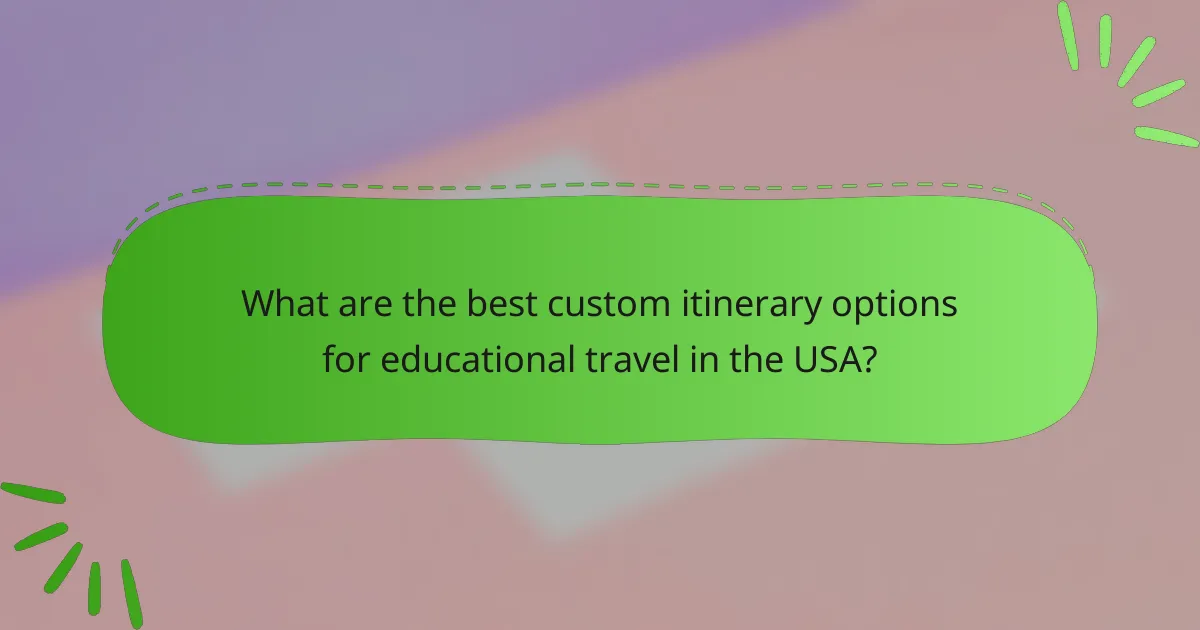
What are the best custom itinerary options for educational travel in the USA?
The best custom itinerary options for educational travel in the USA include hands-on workshops, guided historical tours, STEM-focused excursions, cultural immersion experiences, and local expert-led sessions. These options provide engaging and insightful ways to learn about various subjects while exploring different regions of the country.
Hands-on workshops
Hands-on workshops offer participants the chance to actively engage in learning through practical activities. These workshops can cover a wide range of topics, from art and cooking to science and technology. For example, a pottery workshop in Santa Fe or a cooking class in New Orleans can provide unique insights into local culture.
When planning a hands-on workshop, consider the age and interests of the participants. Look for options that allow for personal expression and creativity, as these experiences often lead to deeper learning and retention.
Guided historical tours
Guided historical tours are an excellent way to explore significant sites while gaining a deeper understanding of American history. These tours often include knowledgeable guides who can provide context and answer questions, enhancing the overall experience. Popular destinations include Washington, D.C., Philadelphia, and Boston.
To maximize the educational value, choose tours that focus on specific themes, such as the American Revolution or civil rights. Ensure that the tour duration fits your schedule, as some can last several hours while others may be shorter and more focused.
STEM-focused excursions
STEM-focused excursions emphasize science, technology, engineering, and mathematics, making them ideal for students interested in these fields. Examples include visits to science museums, observatories, or even local universities that offer specialized programs. These excursions often include interactive exhibits and hands-on activities.
When selecting a STEM excursion, consider the age group and educational goals of the participants. Look for programs that align with current curriculum standards to ensure relevance and engagement.
Cultural immersion experiences
Cultural immersion experiences allow travelers to engage deeply with local customs, traditions, and lifestyles. This can include participating in local festivals, attending traditional performances, or even staying with host families. Cities like San Francisco and New York offer diverse cultural experiences that can enrich understanding of different communities.
To create a meaningful cultural immersion, research the local customs and etiquette beforehand. This preparation can enhance interactions and foster respect for the host culture.
Local expert-led sessions
Local expert-led sessions provide unique insights from individuals with specialized knowledge about a particular area or topic. These sessions can range from lectures and workshops to guided nature walks or culinary classes. Engaging with local experts can offer perspectives that are often overlooked in traditional educational settings.
When organizing these sessions, prioritize experts who have a strong connection to the subject matter and can share personal experiences. This authenticity can significantly enrich the learning experience for participants.
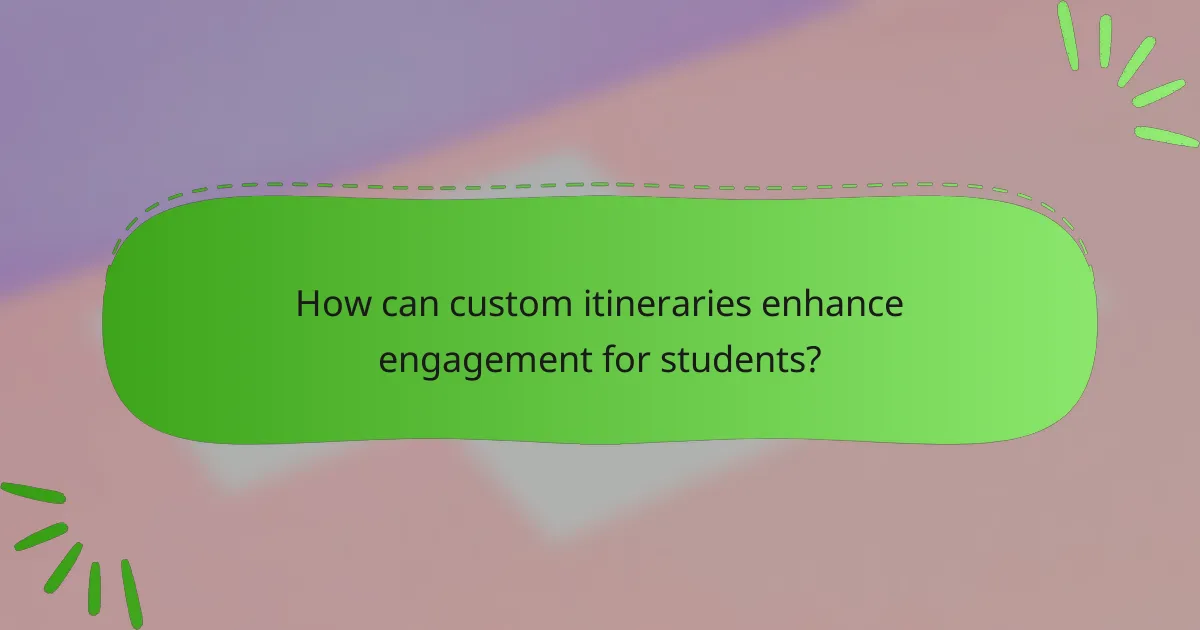
How can custom itineraries enhance engagement for students?
Custom itineraries can significantly boost student engagement by tailoring learning experiences to their interests and educational goals. By incorporating local insights and interactive elements, these itineraries create a dynamic environment that fosters deeper understanding and retention of knowledge.
Interactive learning activities
Interactive learning activities are essential for keeping students engaged. These can include hands-on workshops, guided tours, and simulations that allow students to actively participate rather than passively observe. For example, a science class might visit a local laboratory to conduct experiments, enhancing their grasp of complex concepts.
When designing these activities, consider the age group and learning objectives. Activities should be age-appropriate and relevant to the curriculum, ensuring that students can connect what they learn to real-world applications.
Real-world problem-solving scenarios
Incorporating real-world problem-solving scenarios into custom itineraries helps students apply theoretical knowledge to practical situations. This approach encourages critical thinking and creativity, as students work through challenges they may face in their future careers. For instance, a business class could analyze a local company’s marketing strategy and propose improvements.
To maximize effectiveness, ensure that these scenarios are relevant to the local context and current industry trends. This relevance not only enhances engagement but also prepares students for future challenges in their fields of interest.
Collaborative group projects
Collaborative group projects are a powerful way to foster teamwork and communication skills among students. By working together on tasks related to their itinerary, students can share diverse perspectives and learn from one another. For example, a history class might collaborate on a presentation about the cultural heritage of a local site they visit.
When planning these projects, set clear goals and expectations to guide student efforts. Encourage reflection on group dynamics and individual contributions to enhance the learning experience and ensure that all voices are heard.
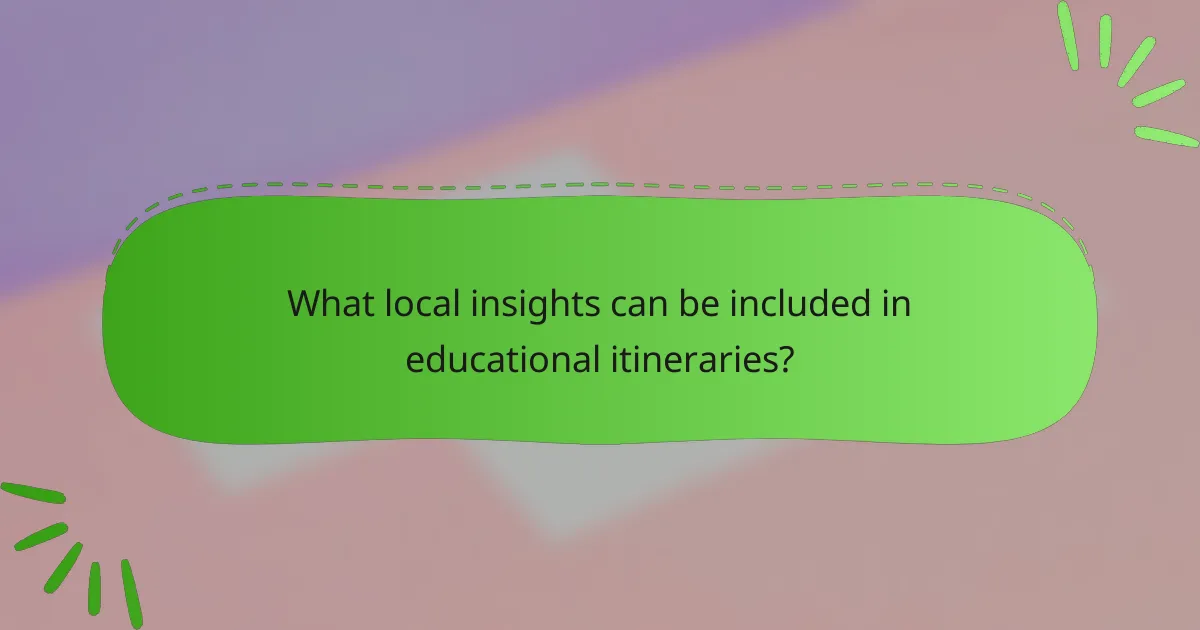
What local insights can be included in educational itineraries?
Educational itineraries can incorporate local insights to enhance learning experiences by connecting students with the community and culture. These insights may include opportunities for community service, participation in local cultural events, and understanding the regional historical context.
Community service opportunities
Integrating community service into educational itineraries allows students to engage directly with local issues and contribute positively. Options may include volunteering at shelters, participating in environmental clean-up efforts, or assisting in local schools. These activities not only benefit the community but also foster empathy and social responsibility among students.
When planning, consider the age and interests of the participants to ensure meaningful engagement. Research local organizations that welcome volunteers and check for any specific requirements, such as background checks or training sessions.
Local cultural events
Attending local cultural events can provide students with a rich understanding of the region’s traditions and practices. This could involve festivals, art exhibitions, music performances, or food fairs. Engaging with these events allows students to experience local customs firsthand and interact with community members.
To maximize the experience, align the events with the educational goals of the itinerary. For example, if studying art, prioritize visits to galleries or workshops. Always check event schedules in advance, as many local events may occur seasonally or on specific dates.
Regional historical context
Understanding the regional historical context is essential for students to appreciate the significance of their surroundings. This can include visits to historical sites, museums, or guided tours that highlight key events and figures from the area. Such experiences help students connect their learning to real-world histories and narratives.
When incorporating historical insights, consider the curriculum focus and select sites that enhance specific learning objectives. Collaborate with local historians or educators who can provide expert guidance and ensure that the information is accurate and engaging.
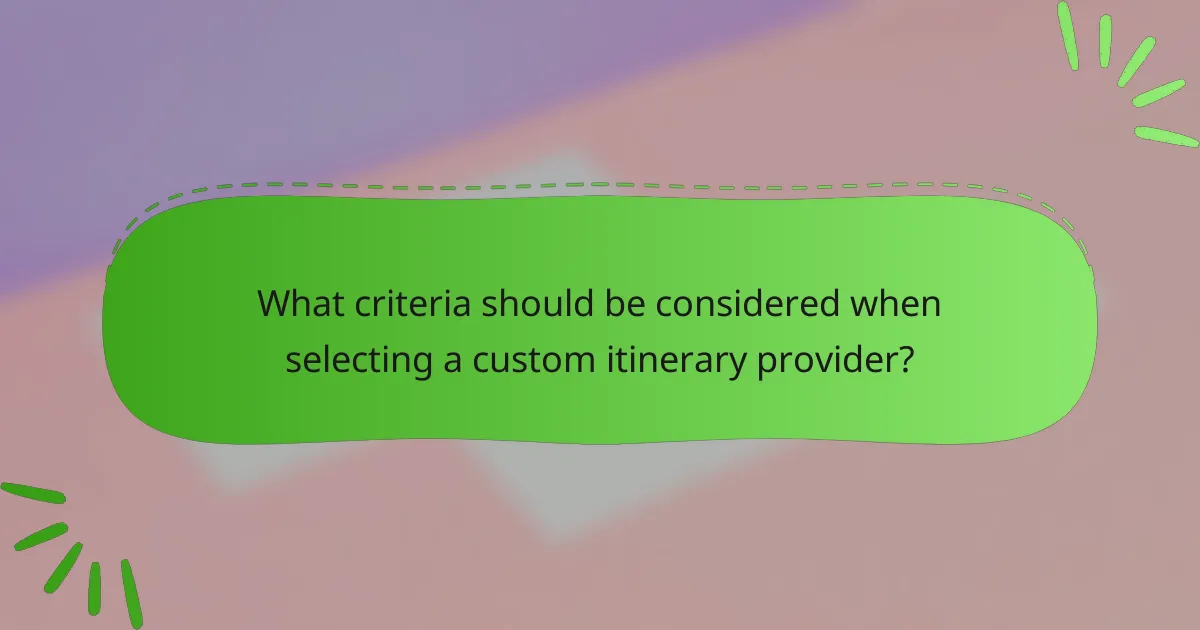
What criteria should be considered when selecting a custom itinerary provider?
When selecting a custom itinerary provider, consider their experience with educational groups, the flexibility of their customization options, and their local partnerships. These factors ensure that the itinerary is engaging, informative, and tailored to the specific needs of the group.
Experience with educational groups
Providers with a strong background in working with educational groups understand the unique requirements of students and educators. They are familiar with curriculum standards and can create itineraries that align with learning objectives.
Look for providers who have successfully organized trips for similar educational institutions or age groups. Testimonials and case studies can provide insight into their effectiveness in delivering educational content during trips.
Customization flexibility
Customization flexibility is crucial for tailoring itineraries to the specific interests and needs of the group. A good provider should offer a range of options for activities, accommodations, and transportation to accommodate different educational goals.
Ask potential providers about their ability to adjust itineraries based on feedback or changing circumstances. This adaptability can enhance the overall experience and ensure that the itinerary remains relevant and engaging.
Local partnerships and connections
Providers with strong local partnerships can offer unique insights and access to resources that enhance the educational experience. These connections may include local experts, museums, or cultural institutions that can provide guided tours or workshops.
Inquire about the provider’s relationships with local organizations and how these can benefit your group. Engaging with the community can lead to richer learning experiences and a deeper understanding of the local culture.
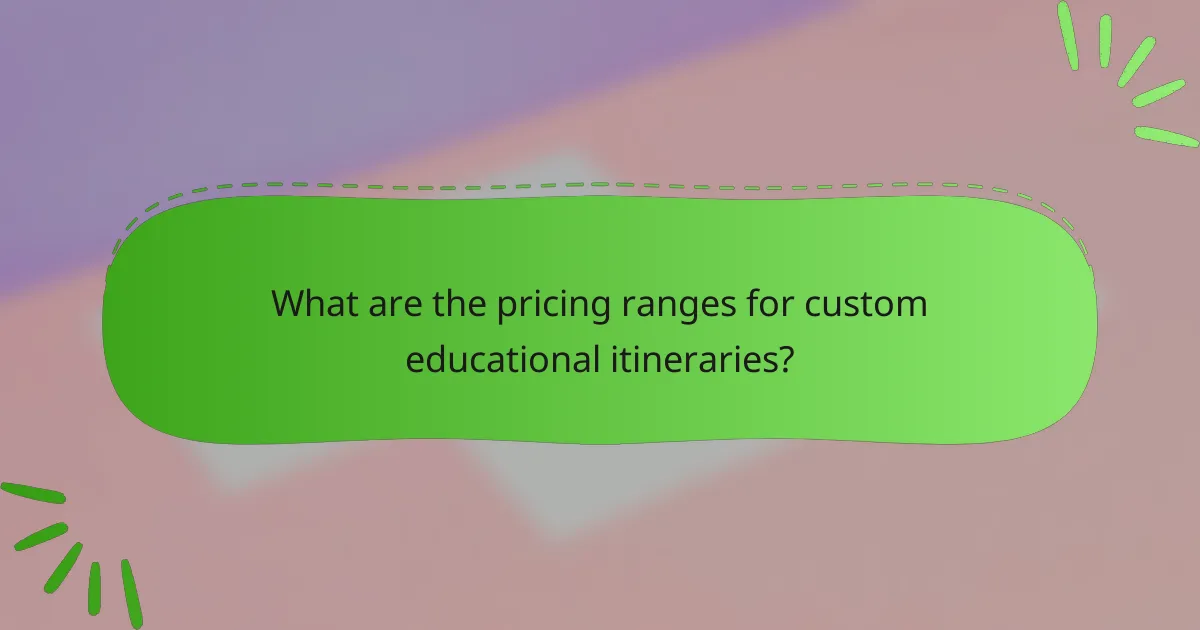
What are the pricing ranges for custom educational itineraries?
Custom educational itineraries typically range from a few hundred to several thousand dollars, depending on factors like duration, complexity, and included services. Basic itineraries may start around 300 USD, while more comprehensive experiences can exceed 3,000 USD.
Factors Influencing Pricing
Several factors can influence the pricing of custom educational itineraries. These include the number of activities, the level of personalization, and the inclusion of local guides or experts. Additionally, the destination’s cost of living and travel expenses will also play a significant role in the overall price.
For example, a basic itinerary in a less expensive country might cost around 500 USD, while a similar itinerary in a major city like Paris could easily reach 1,500 USD or more.
Typical Pricing Ranges
Pricing for custom educational itineraries can vary widely based on the type of experience. For a half-day local tour, expect to pay between 50 to 150 USD per person. Full-day programs can range from 150 to 500 USD, depending on the activities included.
Longer itineraries, such as week-long educational trips, often range from 1,500 to 5,000 USD. This typically includes accommodation, meals, and transportation, along with educational activities tailored to specific learning objectives.
Tips for Budgeting
When budgeting for a custom educational itinerary, consider setting a clear budget range based on your educational goals and desired experiences. Prioritize must-have activities and be flexible with less critical components to manage costs effectively.
Do research on local prices for tours and accommodations to avoid surprises. Engaging with local providers directly can sometimes yield better rates than through intermediaries.
